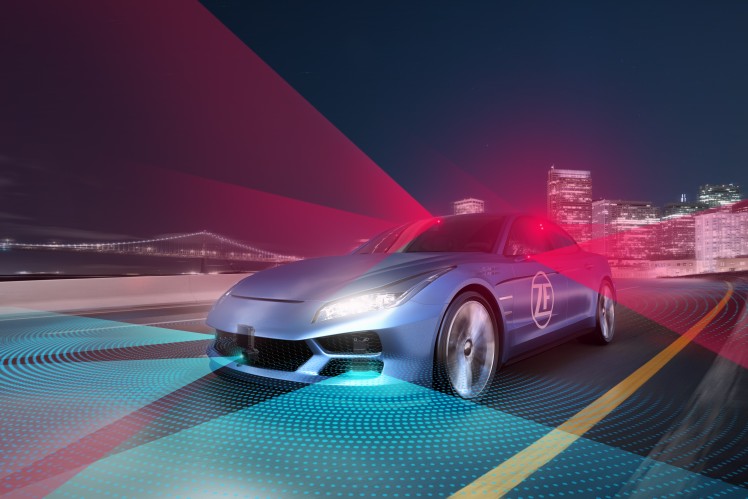Fully autonomous vehicles operating in mixed traffic will become established in the foreseeable future. But according to experts it will take a few more years. Until then, vehicles with different levels of automation will be on the road. The six automation levels of vehicles and their driving functions are described in the SAE International J3016-Standard.


Autonomous Driving: The Steps to Self-Driving Vehicles
Min Reading Time
Autonomous driving is no longer a distant vision of the future. But how close are we to this long-anticipated dream? And what exactly does the term mean? Experts divide the automation level of vehicles and their driving functions into six levels.
Level 0: No Driving Automation
In principle, the automotive pioneers were already driving in this manner. Simplified: The driver steers, brakes and accelerates without the support of assistance systems. In fact, there are a few electronic helpers that, according to the SAE definition, can occur under Level 0, such as active safety systems like Electronic Stability Control (ESC) or Emergency Brake Assist (AEB), since they only support in certain situations. The "non-automated" vehicle is being phased out.
Driver: Complete control.

Level 1 - Driver Assistance
The driver is still fully responsible for the driving task and must always pay attention to traffic, encompass the steering wheel, and be ready for braking. However, advanced assistance systems are at driver´s disposal. When driving assisted, the assistance systems support either steering and braking or accelerating, either laterally or longitudinally, but not simultaneously. For example, Level 1 includes either a lane keeping assist (LKA) or an adaptive cruise control (ACC) with which the vehicle regulates the speed and its distance from the vehicle in front. The driver can override them at any time or even switch them off (if and on/off control is available). These advanced driver assistance systems (ADAS) are already available in almost all vehicle classes. ZF also offers a multitude of them.
Driver: Is fully responsible for longitudinal and lateral guidance, is supported in specific cases.

Level 2 - Partial Driving Automation
The most important difference to Level 1: The advanced driver assistance systems can now control the longitudinal and lateral dynamics at the same time. If, for example, lane keeping assist and ACC are combined in one system one speaks of level 2. ZF goes a little further and offers so-called Level 2 + systems for passenger cars. For Level 2+, various advanced driver assistance systems are intelligently interconnected and thus help to increase safety and comfort. However, the responsibility for everything the vehicle does remains solely with the driver. Drivers must monitor the system at all times, touch the steering wheel regularly, and be able to intervene immediately if necessary. Writing messages on the smartphone behind the steering wheel during driving remains taboo.
Driver: Must constantly monitor the system.

Level 3 - Conditional Driving Automation
It's a big leap from level 2 to level 3. From this stage onwards, the vehicle temporarily takes over the driving task from the driver. The human driver does not have to monitor the system constantly, and may pursue other activities within certain limits. When the systems reach their limits, the driver must be able to intervene at any time - after a warning period. Germany has already created the legal requirements for highly automated systems in 2017. Meanwhile, Mercedes-Benz is the first manufacturer that got the approval for a level 3 system in passenger cars. Since 2022, the first vehicles with the system will roll over German highways, albeit initially only in the case of slower traffic or traffic jams. After all, the allowance is valid up to 60 kilometers per hour. In these situations, the driver may legally use the cell phone, watch movies, or participate in a video meeting. However, he must be able to intervene after a warning period. In the current case, this is 10 seconds. Sleeping behind the steering wheel, for example, stays taboo at level 3.
Driver: May occasionally engage in non-driving activities.

Level 4 - High Driving Automation
The big difference to Level 3: The vehicle operates completely autonomously under certain conditions. The human being no longer has to be ready to intervene. He can work, watch movies and even sleep. And the vehicle may also drive alone, i.e. without occupants. It must be able to reach a safe state without the intervention of a human driver, i.e. to come to a standstill in a parking lot for example. However, the autonomy of the vehicle at Level 4 is still linked to certain conditions, such as a defined route, driving on the highway or in the parking garage. Numerous companies are already testing level 4 vehicles in road traffic. Since 1997, ZF shuttles have been operating fully automated in various projects worldwide on segregated lanes. Legally, Germany has created the framework for "autonomous motor vehicles (up to level 4) in defined operating areas within public road traffic in regular operation" as the first country worldwide.
Driver: No longer has to be ready for intervention.

Level 5 - Full Driving Automation
For Level 5, the autonomy of the vehicle is no longer subject to conditions. In contrast to Level 4, a Level 5 vehicle acts completely autonomously. The vehicle can drive anywhere in road traffic and under all conditions without human beings. Consequently, these vehicles do not require a steering wheel or a gas or brake pedal. A human driver no longer exists at this stage. They are turning into a passenger.
Driver: Does not exist anymore. The human being becomes a passenger.








